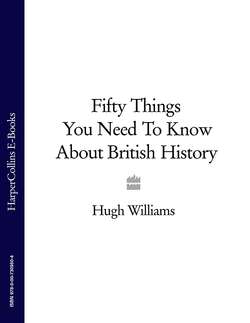Читать книгу Fifty Things You Need To Know About British History - Hugh Williams - Страница 29
Introduction
ОглавлениеEach evening at precisely 8 o’clock, three, sometimes four, members of the volunteer fire brigade in the town of Ypres in Belgium pick up their silver bugles and sound ‘The Last Post’ at the Menin Gate. The Gate is a memorial to the soldiers who lost their lives in the Battle of the Somme in 1916 and whose bodies were never found. I filmed this ceremony for the BBC some years ago. To stand in front of the memorial listening to the plaintive sound of ‘The Last Post’ as your eyes scan the names of nearly 55,000 soldiers who have no grave is an intensely moving experience. A small Belgian town, a great memorial and a simple ceremony combine to express the colossal sadness of war.
Human beings can probably make no greater sacrifice than to die for their country, however wrongheaded the conflict in which they find themselves might be. In the history of Britain, millions of men and women have died in this way. Sometimes they have died in acts of aggression, sometimes in acts of defence; sometimes they have fought for national salvation, sometimes they have found themselves caught up in futile power struggles. Whatever the reason, their deaths were part of British history. The story of the battles in which they died is a central part of the story of who we, the British, are.
This chapter starts in 1415 with one of the most famous battles of the Middle Ages, the Battle of Agincourt, which began the last phase of the so-called Hundred Years’ War against France. Britain’s ambitions to rule France declined after Agincourt and domestic problems became more significant. The Battle of Bosworth in 1485 ended years of internal conflict and ushered in the powerful Tudor dynasty.
It fell to the Tudors’ greatest monarch, Elizabeth I, to defend the country against the Spanish Armada in 1588. She was also very successful at holding the nation together but her successors were less so. The Battle of Naseby in 1645 saw Charles I having to defend his throne against the forces of parliamentary opposition.
By the end of the seventeenth century stability had begun to return to the nation but it had powerful enemies abroad. The next three battles were fought against France, which had once again become its greatest European rival. The Battle of Blenheim in 1704 held in check the imperial ambitions of the French king, Louis XIV. The Battles of Trafalgar in 1805 and Waterloo in 1815 first disrupted and then defeated the Emperor Napoleon’s attempts to dominate the continent of Europe.
Comparative peace in Europe followed the victory at Waterloo, but this was shattered by the outbreak of the First World War, which saw many terrible battles. The Somme in 1916 was one of its worst.
The heavy price that Germany was forced to pay at the end of the First World War led directly to the Second World War just over twenty years later and Britain had to fight for its life in the Battle of Britain in 1940.
The last battle of the chapter, the Battle of Goose Green in the Falklands War of 1982, marks the moment when Britain rallied from a long period of post-war decline to tackle important problems both abroad – and at home.
These ten battles against enemies within and without are an important part of the British story. Britain has had to fight, fight – and fight again – to become the nation it is today.
